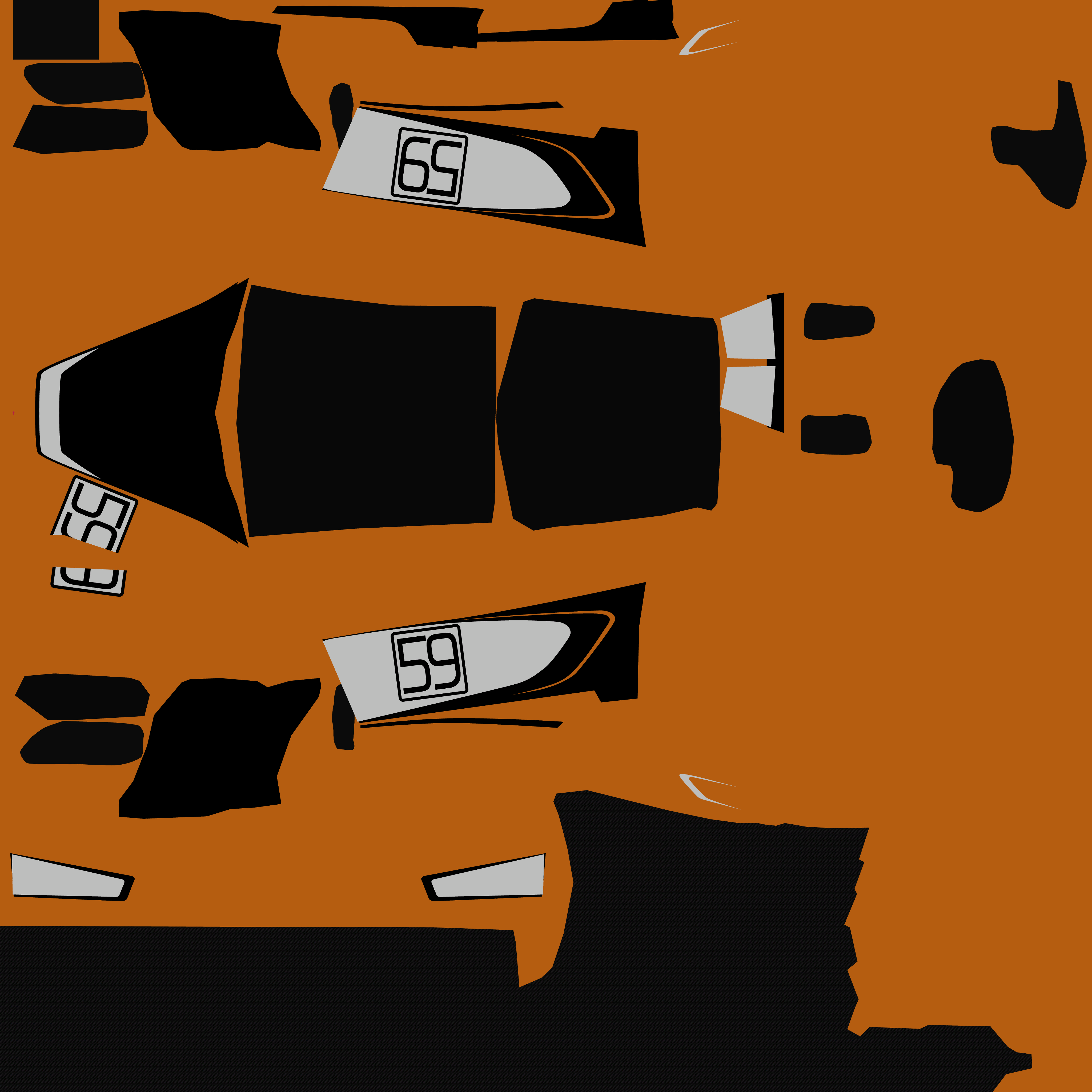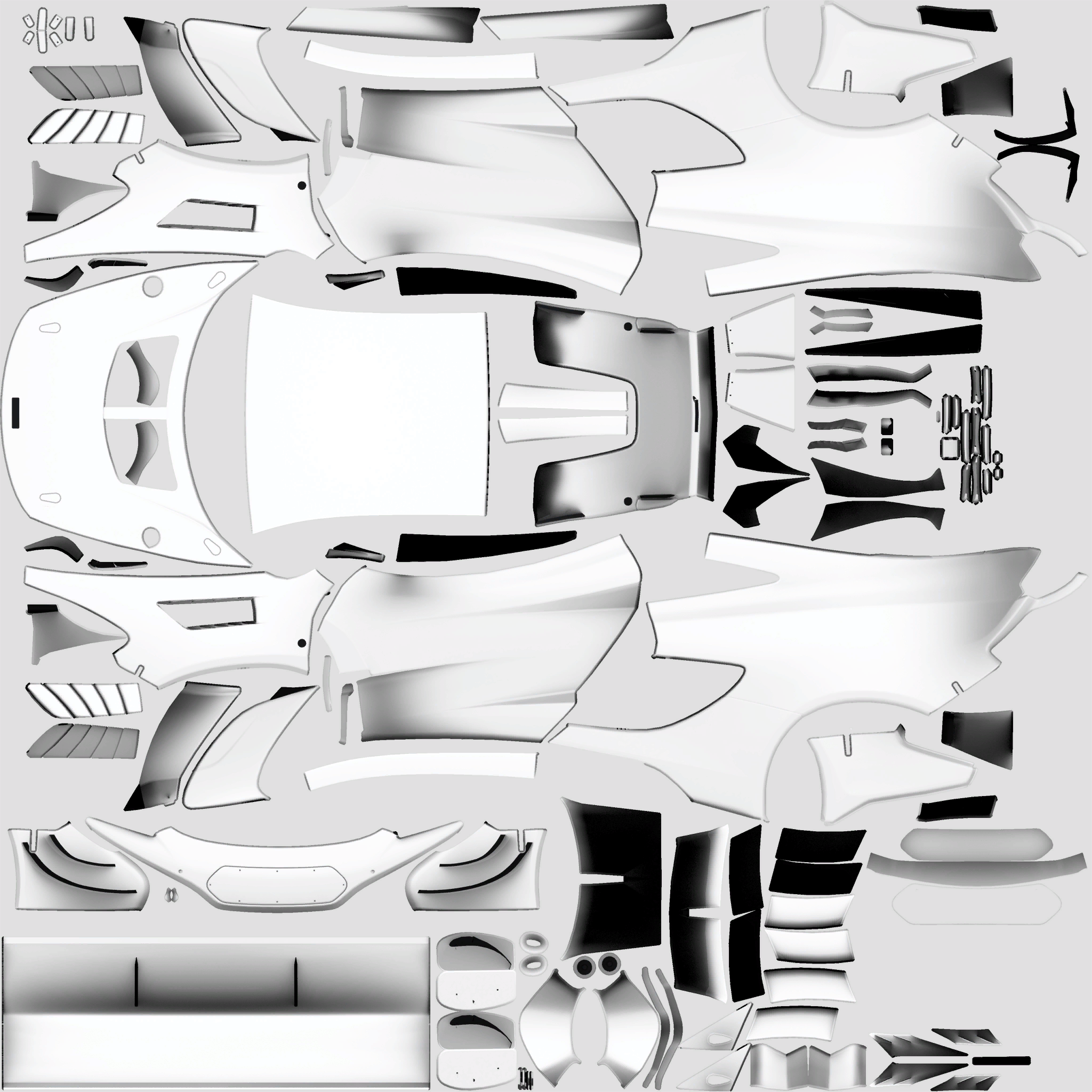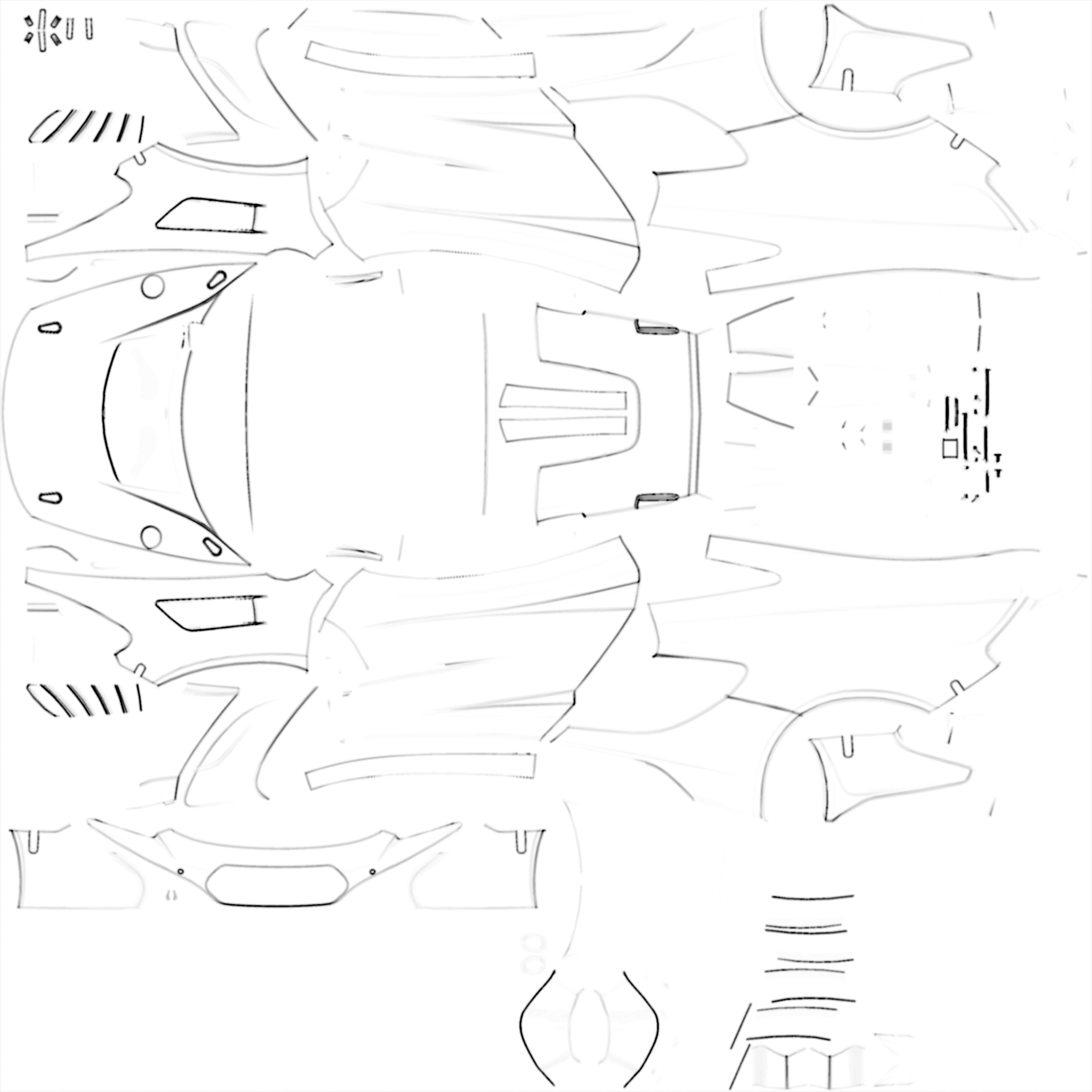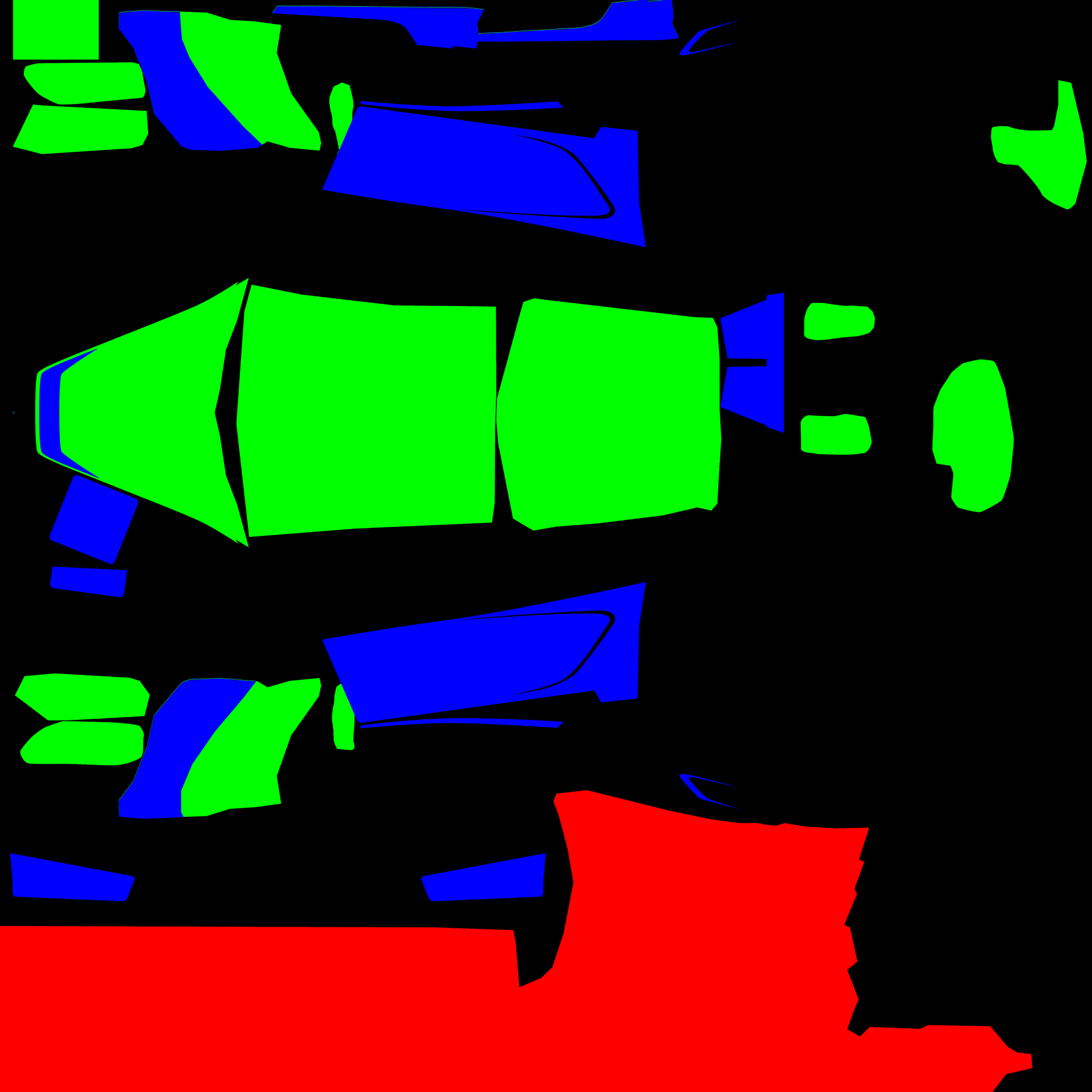IBL Carbody Shader
This page documents the IBL Carbody Shader. For the suggested practice to work with this shader, you can read the guidelines on Working with new IBL/PBR Car Shader.
Shader Name
L2IBLCARBODY
Mapper
REFMAP0
Global Controls
- clearCoatStrength; Debug Control to help you setup the base coat, "bypassing the clear coat". Must be set back to 1 most of the time.
- lacquerThickness; To be changed only for tinted lacquers (lacquerColor <> white). Defines the thickness of the lacquer layer. For tinted lacquers it adjusts how the effect looks on curved surfaces.
Region Colours (Materials Isolation Map)
- Black; Material - Base Paint of the carbody (the carbody color/paint sprayed on the primer)
- Red; Material (Carbon, Plastic, Vinyl Wrap, Paint, Stickers, etc..)
- Green; Material (Carbon, Plastic, Vinyl Wrap, Paint, Stickers, etc..)
- Blue; Material (Carbon, Plastic, Vinyl Wrap, Paint, Stickers, etc..)
- White; Material (Carbon, Plastic, Vinyl Wrap, Paint, Stickers, etc..)
- Alpha; Material (Carbon, Plastic, Vinyl Wrap, Paint, Stickers, etc..)
Region/Materials Controls (each Region has these dedicated controls)
- baseCoatRoughness; Defines how smooth the base coat layer is, producing more or less reflection scattering. Lower values will produce smoother surfaces with sharper reflections. Higher values will produce duller surfaces because of the higher roughness.
- baseCoatSpecStrength; Defines the strength of the specular highlight of the base coat layer
- clearCoatRoughness; Defines how smooth the clear coat layer is, producing more or less reflection scattering. Lower values will produce smoother surfaces with sharper reflections. Higher values will produce duller surfaces because of the higher roughness.
- clearCoatRefractiveIndex; Defines the rate and degree that reflections increase with decreasing angle of incidence (IOR) for the clear coat layer
- baseCoatRefractiveIndex; Defines the rate and degree that reflections increase with decreasing angle of incidence (IOR) for the base coat layer
- lacquerColour; RGB colour picker to set the overall tint of the lacquer. Depending on other controls, this can have various effects. Most of the time, the lacquer should be neutral (white).
- metallicFlakeColour; RGB colour picker to set the tint of the flakes (edit only if flakes are present in the region)
- metallicPaintStrength; Defines the strength of the paint layer that contains the flakes (edit only if flakes are present in the region)
- metallicFlakeStrength; Defines the strength of the the flakes appearance (edit only if flakes are present in the region)
Textures Required
| Name | UVW | Type | Format | Description |
|---|---|---|---|---|
| albedoSpec | 1 | diffusemap | RGB.A/DXT 5 - 8bit*pixel | albedo diffuse map in the RGB, and coat specular map in the Alpha; this specmap is controlling the specularity under the coat, so most of the time will be a white map with carbon fiber masks. |
| aoSpecMask | 1 | specularmap | RGB.A/DXT 5 - 8bit*pixel | ambient occlusion*cavity map in the RGB, and a specular mask in the Alpha; this spec mask will need the cavity map that you'll do via the Edge Baker tool, plus any other scratch you'd like to bake. Remember to add all the bottom parts like floors, masked here, so they don't reflect the grounds since (yet) we have no specular AO. |
| damage | 1 | diffusemap | RGB/DXT 1 - 4bit*pixel | damage diffuse map in the RGB; as it were before |
| damageNormalMap | 1 | bumpmap | RGB.A/DXT 5 - 8bit*pixel | damage normal map in the RGB; as it were before |
| region | 1 | specularmap | RGB.A/DXT 5 - 8bit*pixel | region map in the RGB; decals, stickers, body parts with different materials, carbon, chrome etc.. will be masked and isolated using a dedicated colour for each material (eg; all decals GREEN, all plastics BLUE, all carbon RED etc...) |
| metalFlakes | COMMON MAP - NOT EDITABLE |
Map Examples
Diffuse (RGB) and Specular Map (Alpha) with masked carbon bits.
Ambient Occlusion with multiplied cavity map (RGB) and Edge Specular Mask (Alpha) with cavity/edges to tame the specular inside and along edges and cavities. You do this last mask, via the Edge Baker Tool.
Region map (RGB) using Black for the overall paint, Red for Carbon bits, Blue for decals and Green for vinyl wraps. In this case we used only 4 regions/materials, you have 6 in total. In this case there is no alpha channel, because this livery didn't need a 6th material (which is stored in the alpha).





